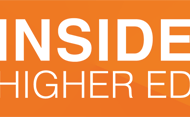Changes in 2 Loan Programs

Inside Higher Ed
By Scott Jaschik
April 20, 2022
The U.S. Education Department on Tuesday announced changes to two key student loan programs: the Public Service Loan Forgiveness and income-driven repayment programs.
The changes would “fix long-standing failures” in the programs, department officials said. After the changes are made, 40,000 borrowers will have their debts forgiven under the Public Service Loan Forgiveness program. More than 3.6 million borrowers will also receive at least three years of additional credit toward IDR forgiveness.
“Student loans were never meant to be a life sentence, but it’s certainly felt that way for borrowers locked out of debt relief they’re eligible for,” Secretary of Education Miguel Cardona said Tuesday. “Today, the Department of Education will begin to remedy years of administrative failures that effectively denied the promise of loan forgiveness to certain borrowers enrolled in IDR plans.”
At the same time, the department plans to continue its approach of dealing with loan issues that come up in specific loan programs and not issuing across-the-board loan forgiveness, as many Democrats in Congress are urging.
“We are working really hard where there is clear authority for us to help borrowers,” said Under Secretary of Education James Kvaal.
Specifically, the department is working to end “forbearance steering.”
Department regulations require that borrowers who are facing difficulty making their loan payments get clear information from servicers about their options for staying out of delinquency, including IDR plans, and the financial consequences of choosing short-term options like forbearance. However, recent department reviews “suggest that loan servicers placed borrowers into forbearance in violation of department rules, even when their monthly payment under an IDR plan could have been as low as zero dollars,” the department said.
“These findings are consistent with concerns raised by the Consumer Financial Protection Bureau and state attorneys general. A borrower advised to choose an IDR plan instead of forbearance can get a reduced payment, stay in good standing, and make progress toward loan forgiveness. A borrower advised to choose forbearance—particularly long-term consecutive or serial uses of forbearance—can see their loan balance and monthly payments grow due to interest capitalization and lead to delinquency or default.”
The department “will target forbearance steering by restricting servicers’ ability to enroll borrowers in forbearance by text or email, conducting an external review of patterns of forbearance use and servicers’ practices to identify other potential changes to address steering, and working in partnership with the Consumer Financial Protection Bureau to do regular audits of forbearance use.”
Continue Reading
Share








